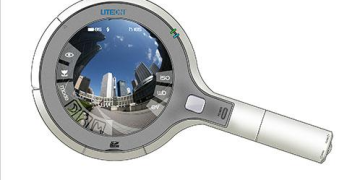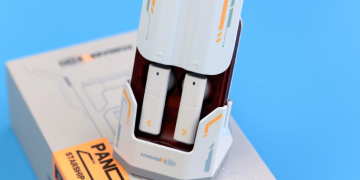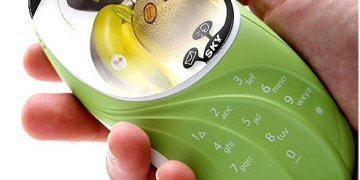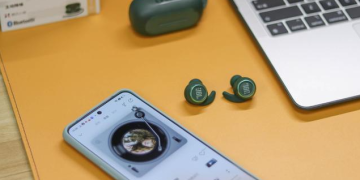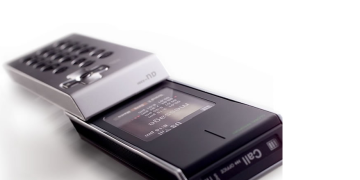Introduction
Interface design plays a crucial role in shaping the user experience of digital products and applications. From skeuomorphic designs that mimic real-world objects to flat designs that embrace simplicity, the evolution of interface design reflects changing aesthetic preferences and technological advancements. In this article, we explore the evolution of interface design from skeuomorphism to flat design and beyond.
Skeuomorphism: Designing for Familiarity
Skeuomorphism is a design approach that seeks to replicate real-world objects and textures in digital interfaces. In skeuomorphic design, elements such as buttons, icons, and textures are designed to resemble their real-world counterparts, creating a sense of familiarity for users. For example, a digital calendar app may feature a design that resembles a physical paper calendar, complete with torn edges and spiral binding.
Flat Design: Embracing Simplicity
Flat design emerged as a response to the visual clutter and realism of skeuomorphic design. Characterized by clean lines, minimalistic elements, and vibrant colors, flat design prioritizes simplicity and functionality. Unlike skeuomorphic design, which seeks to mimic real-world objects, flat design embraces abstraction and simplicity, focusing on clarity and usability. Popularized by companies like Apple and Google, flat design has become a dominant aesthetic in digital interface design.
The Shift from Skeuomorphism to Flat Design
The transition from skeuomorphic design to flat design was driven by several factors, including changes in technology, shifts in aesthetic preferences, and the need for improved usability. Skeuomorphic designs, while visually appealing, often suffered from visual clutter and usability issues. Flat design offered a solution to these challenges by prioritizing simplicity, clarity, and usability. The transition from skeuomorphism to flat design marked a paradigm shift in interface design, emphasizing functionality and user experience over visual realism.
Material Design: Blending Realism and Minimalism
Material design, introduced by Google in 2014, represents a synthesis of skeuomorphism and flat design principles. Combining the tactile realism of skeuomorphic design with the simplicity and clarity of flat design, material design offers a holistic approach to interface design. Material design is characterized by its use of depth, motion, and responsive animations to create a sense of realism and immersion. By blending elements of the physical and digital worlds, material design seeks to enhance the user experience and create interfaces that are intuitive, engaging, and aesthetically pleasing.
The Future of Interface Design
As technology continues to evolve, interface design will undoubtedly evolve alongside it. Emerging trends such as augmented reality (AR), virtual reality (VR), and voice user interfaces (VUI) are reshaping the landscape of interface design, opening up new possibilities for interaction and engagement. The future of interface design lies in embracing these emerging technologies and exploring innovative ways to create immersive, intuitive, and user-friendly experiences.

FAQs After The Conclusion
- What are the key differences between skeuomorphic and flat design?Skeuomorphic design seeks to replicate real-world objects and textures in digital interfaces, while flat design prioritizes simplicity, clarity, and functionality. Skeuomorphic design often features realistic textures and shadows, whereas flat design uses clean lines, minimalistic elements, and vibrant colors.
- Why did the design industry shift from skeuomorphism to flat design?The shift from skeuomorphic design to flat design was driven by factors such as changes in technology, shifts in aesthetic preferences, and the need for improved usability. Skeuomorphic designs often suffered from visual clutter and usability issues, prompting designers to embrace the simplicity and clarity of flat design.
- What are some advantages of flat design?Flat design offers several advantages, including improved usability, faster loading times, and scalability across different devices and screen sizes. Flat design also allows for greater flexibility and customization, making it easier for designers to create cohesive and visually appealing interfaces.
- How does material design differ from flat design?Material design represents a synthesis of skeuomorphic and flat design principles, blending the tactile realism of skeuomorphic design with the simplicity and clarity of flat design. Material design emphasizes depth, motion, and responsive animations to create interfaces that are intuitive, engaging, and aesthetically pleasing.
- What are some emerging trends in interface design?Emerging trends in interface design include augmented reality (AR), virtual reality (VR), and voice user interfaces (VUI). These technologies are reshaping the landscape of interface design, opening up new possibilities for interaction and engagement.
- How can I stay updated on the latest trends in interface design?Staying updated on the latest trends in interface design involves actively engaging with design communities, attending conferences and events, and following industry blogs and publications. By staying informed, designers can incorporate the latest insights and strategies into their design process.
- What are some challenges in implementing material design?Some challenges in implementing material design include mastering the principles of depth, motion, and responsive design, ensuring consistency across different platforms and devices, and balancing realism with simplicity. By overcoming these challenges, designers can create immersive and engaging interfaces that enhance the user experience.
- What role do user preferences play in interface design?User preferences play a crucial role in interface design, informing decisions about layout, navigation, typography, and color scheme. By understanding user preferences and behaviors, designers can create interfaces that are intuitive, user-friendly, and tailored to the needs of their target audience.



